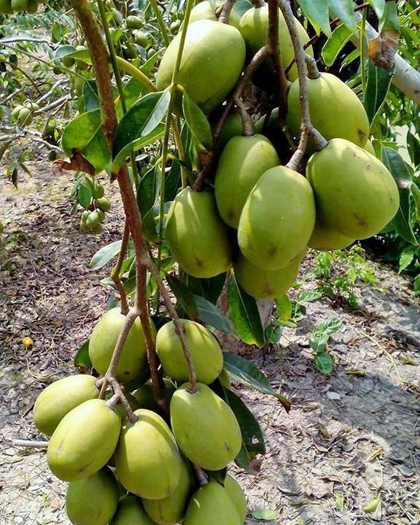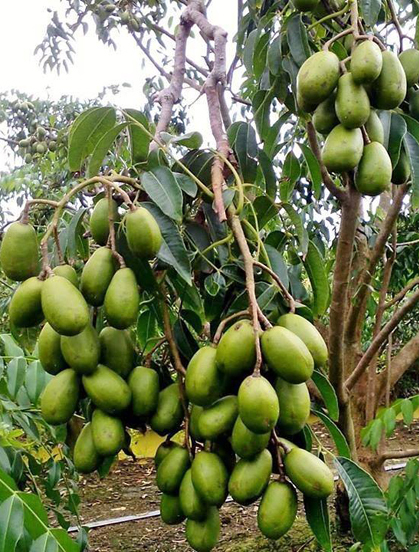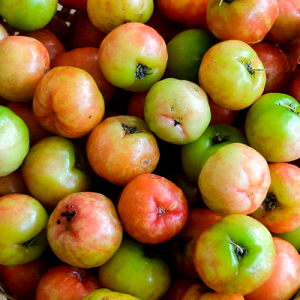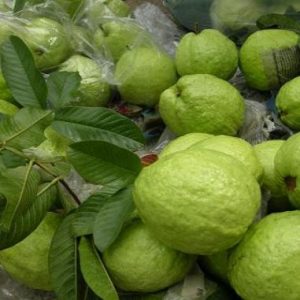

The fruit may be eaten raw; the flesh is crunchy and a little sour. The fruit is best when fully colored, but still somewhat crunchy. At this stage, it has a pineapple-mango flavor. The flesh is golden in color, very juicy, vaguely sweet, but with a hint of tart acidity.
In Vietnam the unripe fruit is eaten with salt, sugar, and chili, or with shrimp paste.
In the Southern area of Vietnam, when the ambarella fruits are ripe, tourists can admire the alluring yellow color of this fruit that has appeared in many streets in Saigon for several weeks. While taking a bite of this golden fruit, Vietnamese locals will not only taste the summer air flavor, but also bring back their familiar childhood memories from the past.
Ambarella is a woody plant in the tropics, an edible, seed-bearing fruit tree. This fruit can be eaten fresh, the pulp is thick, hard, crunchy and has a sweet and sour taste.
Eating ambarella is quite similar to when you eat an apple. First, you should wash the fruit with cold water to remove all the soil and sand from the outside and then peel. Use a knife to cut the skin out, try to cut only a thin layer in order to retain the acidity of the insides. Then you could have it as it is, or continue to cut the fruit in half for a more suitable size.
Ambarella is not only a Vietnamese favorite snack with a mouthful taste, but it also accounts for many beneficial effects. According to oriental medicine, the use of ambarella is to detox and refresh. This fruit contains a lot of ascorbic acid, which helps to increase resistance to people suffering from flu. To be effective, there is a traditional way of using salted ambarella to chew thoroughly and swallow slowly to help immediately relieve sore throats.

















Đánh giá
Chưa có đánh giá nào.